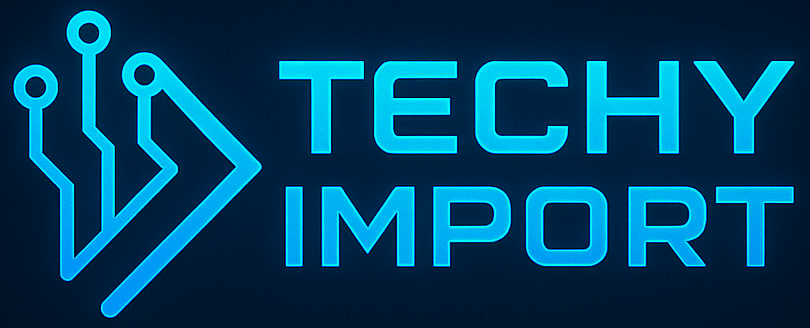I remember feeling confused the first time I used my health insurance. After getting a big medical bill, I learned about coinsurance and how it worked after the deductible. It was a bit stressful at first, but now I understand what to expect.
You can pay for medical expenses like doctor appointments and hospital stays with the help of health insurance. In addition to the monthly premium, you may also have to pay deductibles or copays.
In this article, you’ll learn how health insurance works in simple steps to help you save money and stay covered.
Table of Contents
- What’s health insurance in simple words – Let’s Know About It!
- How do yearly decorations work in health insurance?
- What’s a deductible in health insurance – Learn More!
- What’s coinsurance and how does it work?
- What’s a copay in health insurance?
- How does preventative care work in health insurance?
- How can I find affordable health insurance – Act Today!
- What are the different types of health insurance plans?
- Do health insurance plans cover emergency care – Plan Smart!
- How do I use my health insurance at the croaker?
- How does traditional medicine content work?
- FAQs:
- In The End:
What’s health insurance in simple words – Let’s Know About It!
Health insurance is a way to help you pay for medical care without covering all the costs by yourself. It works like a contract between you and an insurance company. You pay a yearly figure, called a decoration, and in return, the company helps pay for your healthcare charges like croaker visits, sanitarium stays, conventions, and emergency care.
Health insurance is especially helpful during extremities or for habitual conditions because it saves you plutocrats and gives you access to good healthcare. Without it, indeed a simple illness or injury could lead to high medical bills.
How do yearly decorations work in health insurance?
Yearly decorations are the payments you make each month to keep your health insurance active. Suppose of it like a subscription. Just like you pay yearly for Netflix or your phone bill, you pay a fixed quantum to the insurance company indeed if you do n’t visit the croaker
that month.
These decorations guarantee that your health insurance is always ready when you need it. The quantum you pay depends on the type of plan you choose, your age, where you live, and whether it’s an individual plan or a family plan.
What’s a deductible in health insurance – Learn More!

A deductible is the quantum of plutocracy you must pay out of your own fund before your health insurance starts helping you with medical costs. Let’s say your deductible is$ 1,000. This means you’ll pay the first$ 1,000 of your healthcare charges by yourself.
After that, your insurance plan starts participating in the costs with you. Deductibles can vary from plan to plan. Some are high, meaning your yearly decoration may be lower. Others are low, but the decoration might be advanced.
What’s coinsurance and how does it work?
- Coinsurance only applies after you meet your deductible.
- It continues until you reach your out-of-pocket maximum.
- Once you hit that maximum, your insurance covers 100% of costs for the rest of the year.
- Coinsurance rates are usually listed as 80/20, 70/30, or 90/10 depending on your plan.
- Different services may have different coinsurance rates, so check your plan’s details.
- You might also have to pay copays along with coinsurance, depending on the service.
- Coinsurance helps insurance companies and members share the cost of care.
- It encourages people to use healthcare wisely and avoid overuse of services.
- Always know your coinsurance amount so you can budget for medical care.
What’s a copay in health insurance?
The abbreviation copay refers to the tiny, predetermined amount you must pay for specific medical services. Usually, it is due when the visit occurs. For example, you might spend $10 on a ritual or $30 to see your primary croaker.
Copays are predictable, which makes budgeting for medical visits easier. Unlike coinsurance, which is a change of the bill, a copay is the same quantum each time. Some services, like preventative care, may have no copay at all.
How does preventative care work in health insurance?
preventative care is the medical care you admit to stay healthy before you get sick. The utmost health insurance plans cover preventative services at 100, which means you do n’t have to pay anything, not indeed a copay.
These services include periodic physical examinations, vaccinations( like flu shots), cancer wireworks, cholesterol tests, and more. preventative care is covered because it helps catch problems beforehand, when they’re easier and cheaper to treat.
How can I find affordable health insurance – Act Today!

Your income, needs, and place of residence all affect your ability to find reasonably priced health insurance. First, check if your employer offers a health plan. Employer- patronized plans are frequently cheaper because your employer pays a part of the premium.
However, visit government business( like Healthcare, If that’s not available.gov). If your income is modest or moderate, you might be eligible for subsidies or abatements there.These abatements help reduce your yearly decoration and out- of- fund costs.
What are the different types of health insurance plans?
HMO( Health conservation Organization):
These layouts allow you to select a primary care croaker and have less embellishments. You have to stay in the network, and seeing a specialist usually requires a recommendation.
PPO( Preferred Provider Organization):
Offers further inflexibility in choosing croakers. You can see specialists without referrals and indeed go out- of- network, but at an advanced cost.
EPO( Exclusive Provider Organization):
Like an HMO, but you do n’t need a referral for specialists. still, it does n’t cover any out- of- network care( except extremities).
POS( Point of Service):
A combination of PPO and HMO. For certain services, you can go out-of-network, but a referral is required to see a specialist.
HDHP( High Deductible Health Plan):
These have lower decorations but advanced deductibles. frequently paired with a Health Savings Account( HSA) to save on levies.
Do health insurance plans cover emergency care – Plan Smart!
Yes, utmost health insurance plans cover exigency care indeed if the sanitarium or ER is out- of- network. This means that if you have an unforeseen medical emergency, like casket pain or a serious accident, you can go to the nearest emergency room without fussing if it’s in your network.
Still, while emergency room care is covered, it does n’t mean it’s free. You may still need to pay a deductible, copay, or coinsurance. In some cases, you might admit separate bills from the sanitarium and the emergency croakers.
How do I use my health insurance at the croaker?
Using your health insurance at the croaker is simple once you understand the way. First, make sure the croaker you’re visiting is in your plan’s network. This is typically available on the website of your insurance company.
Present your insurance card to the receptionist when you go to your appointment. Your plan ID and the insurance company’s contact information are among the details on this card. You could have to pay a modest amount known as a copay, depending on your plan.
How does traditional medicine content work?

Health insurance plans include traditional medicine content, which helps lower the cost of specifics. Each plan has a formulary, which is a list of covered medicines sorted into categories.
Some plans also bear you to get previous blessing for certain drugs.However, you can ask your croaker if an analogous, approved volition is available, If your tradition is n’t covered.
Apothecaries that are in your insurance’s network generally offer lower prices.
FAQs:
What’s previous authorization in health insurance?
Previous authorization is a process where your insurance company must authorize certain treatments or specifics before you can admit them. This is generally needed for high- cost services like surgeries, MRIs, or specialty specifics.
What happens if I do n’t have health insurance?
Still, you’ll have to pay all your medical costs out of your own fund, If you do n’t have health insurance. Indeed a short visit to the emergency room or a minor surgery can bring thousands of bones.
How does short- term health insurance work?
Short- term health insurance provides temporary content, generally lasting a many months to a time. It’s designed for people who are between jobs, staying for another plan to start, or missed the registration window.
Can I change my health insurance plan during this time?
In utmost cases, you can only change your health insurance plan during the Open Registration Period , which generally happens once a time. Still, there are certain situations called Qualifying Life Events that allow you to change plansmid-year.
Do children and families need separate insurance?
No, you do n’t need separate insurance for each family member. Numerous health insurance plans allow you to enroll your entire family under one policy. This is generally more affordable than buying individual plans for each person.
In The End:
In conclusion, health insurance is a smart way to manage your medical costs and protect your finances. It works by sharing expenses between you and the insurance company through premiums, deductibles, copays, and coinsurance. Understanding these parts helps you use your plan wisely and avoid surprises.





